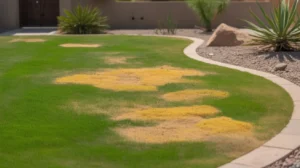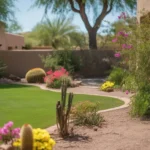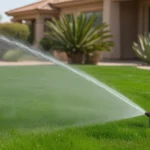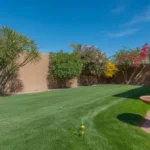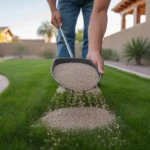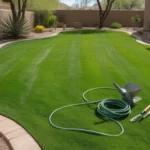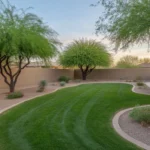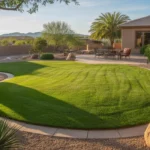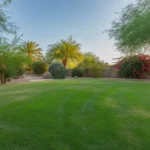As the scorching Arizona summer sets in, many Gilbert homeowners notice their once-vibrant green lawns taking on an unsightly yellowish hue. This discoloration can be alarming, but understanding the underlying causes is the first step to restoring your lawn’s health and beauty. In this article, we’ll explore the reasons behind summer lawn yellowing and provide practical solutions to help your grass thrive in the intense heat.
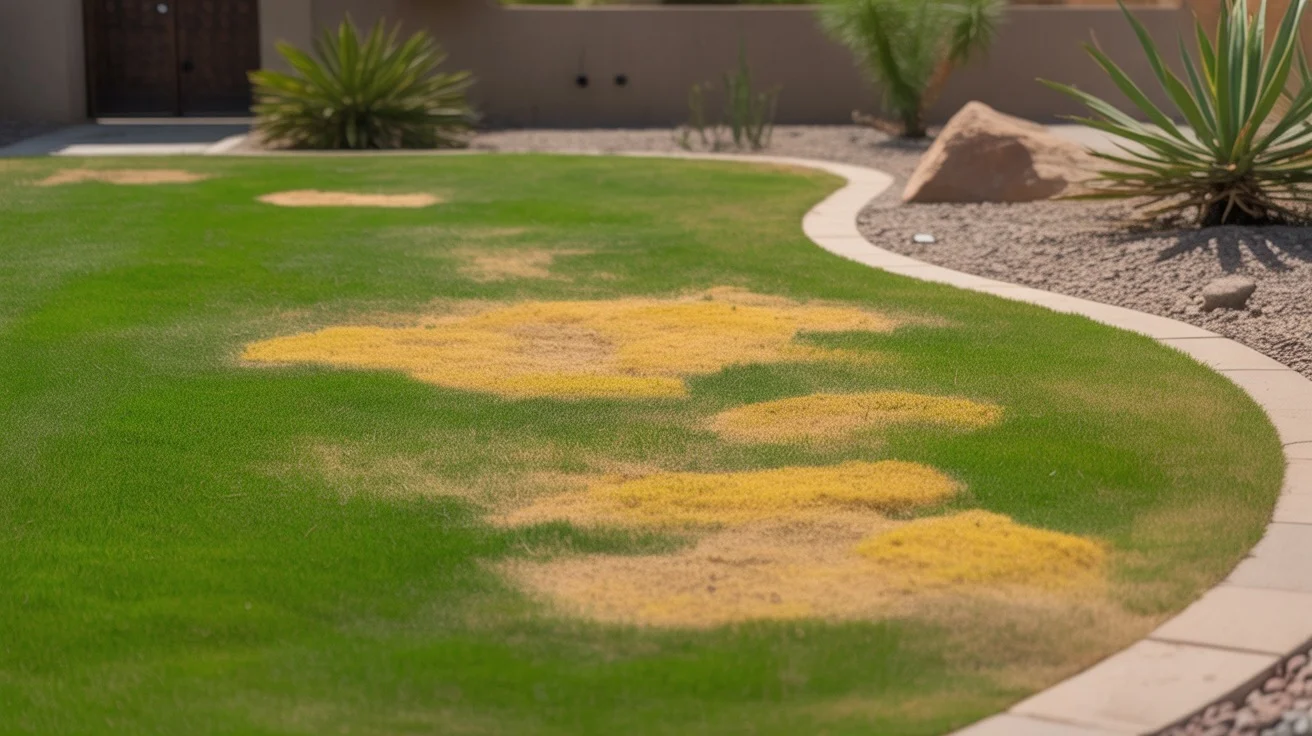
Iron Deficiency: A Common Culprit
One of the most frequent causes of yellow lawns in Gilbert is iron deficiency, also known as iron chlorosis. Iron is a crucial nutrient for grass, essential for producing chlorophyll, which gives the blades their rich green color. When the soil pH is too high or the roots are damaged, the grass struggles to absorb iron, leading to yellowing.
To combat iron deficiency, consider applying an iron supplement specifically designed for lawns. These products are readily available at local garden centers and can be applied as a spray or granular treatment. Be sure to follow the instructions carefully and water the lawn thoroughly after application to help the grass absorb the iron.

Deshawn Hill, a seasoned landscaper in Gilbert, advises, “If you suspect iron deficiency, act quickly. The longer you wait, the more stress your lawn endures, making it harder to recover. Regular iron treatments can make a world of difference in maintaining a lush, green lawn through the summer.”
Overwatering: Drowning Your Lawn
While it may seem counterintuitive, overwatering your lawn can actually lead to yellowing grass. When the soil is constantly saturated, the roots struggle to access oxygen, leading to shallow root development and nutrient deficiencies. Additionally, excess moisture creates an ideal environment for fungal growth, which can further damage your lawn.
To prevent overwatering, adjust your irrigation schedule to deeply water your lawn less frequently. Aim for longer watering sessions that allow the water to penetrate 6-8 inches into the soil, promoting deep root growth. Be mindful of the weather and skip watering after heavy rains. Installing a smart irrigation controller can also help optimize your watering schedule based on local weather conditions.
Pest and Disease Pressure
Summer heat and humidity can create a perfect storm for pest infestations and fungal diseases, both of which can cause lawn yellowing. Chinch bugs, for example, feed on grass blades, injecting a toxin that leads to yellowing and eventual death of the grass. Similarly, fungal diseases like dollar spot and brown patch thrive in warm, moist conditions, causing discoloration and weakening the lawn.
Regular lawn inspections are key to identifying pest and disease issues early. Look for signs of insect activity, such as small holes in the grass blades or the presence of frass (insect droppings). If you notice circular patches of yellowing or browning grass, fungal disease may be to blame. Consult with a local lawn care professional to develop a targeted treatment plan that addresses the specific issue at hand.
“Prevention is always better than cure when it comes to pest and disease management,” notes Deshawn. “Maintaining proper mowing height, avoiding excess thatch buildup, and ensuring good air circulation can go a long way in keeping your lawn healthy and resilient.”
Nutrient Imbalances and Soil Health
Yellowing grass can also be a sign of underlying nutrient imbalances or poor soil health. Gilbert’s alkaline soil can make it challenging for grass to access essential nutrients, leading to deficiencies that manifest as discoloration. Compacted soil, often a result of heavy foot traffic or clay-rich soil composition, can further exacerbate the issue by limiting root development and nutrient uptake.
To address nutrient imbalances, consider conducting a soil test to identify specific deficiencies. Based on the results, you can apply targeted fertilizers or soil amendments to restore balance. Aerating your lawn annually can also help alleviate soil compaction, allowing better water and nutrient penetration to the roots.
Deshawn emphasizes the importance of soil health, stating, “A healthy lawn starts with healthy soil. By focusing on building a robust soil ecosystem through proper fertilization, aeration, and organic matter incorporation, you’ll create a foundation for a thriving, green lawn that can withstand the challenges of Gilbert summers.”
Embracing Native and Drought-Tolerant Grasses
While traditional turfgrass varieties may struggle in Gilbert’s intense summer heat, native and drought-tolerant grass species offer a more sustainable and resilient alternative. Grasses like buffalo grass, blue grama, and Arizona fescue have evolved to thrive in the region’s arid climate, requiring less water and maintenance compared to non-native species.
Transitioning to a native or drought-tolerant lawn can help reduce the risk of yellowing and other heat-related issues. These grasses have deeper root systems that allow them to access moisture and nutrients more efficiently, even during periods of stress. Plus, they often require less fertilization and pest control, making them a more eco-friendly choice for your Gilbert landscape.
“Embracing native and drought-tolerant grasses is a game-changer for Gilbert homeowners,” says Deshawn. “Not only do these varieties maintain their color and health better through the summer, but they also contribute to water conservation efforts and create a more sustainable yard.”
By understanding the causes of summer lawn yellowing and implementing targeted solutions, you can restore your Gilbert lawn to its vibrant, healthy state. From addressing iron deficiency and overwatering to promoting soil health and considering native grass alternatives, a proactive approach to summer lawn care will help you maintain a lush, green oasis in the heart of the desert.

